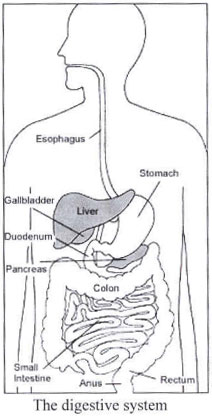
ERCP - ENDOSCOPIC RETROGRADE CHOLANGIOPANCREATOGRAPHY
ERCP Preparation Instructions
Endoscopic retrograde cholangiopancreatography(en-doh-SKAH-pik REH-troh-grayd koh-LAN-jee-oh-PANG-kree-uh-TAH-gruh-fee) (ERCP) enables the physician to diagnose problems in the liver, gallbladder, bile ducts, and pancreas. The liver is a large organ that, among other things, makes a liquid called bile that helps with digestion. The gallbladder is a small, pear-shaped organ that stores bile until it is needed for digestion. The bile ducts are tubes that carry bile from the liver to the gallbladder and small intestine. These ducts are sometimes called the biliary tree. The pancreas is a large gland that produces chcrnicals that help with digestion and hormones such as insulin.
ERCP is used primarily to diagnose and treat conditions of the bile ducts, including gallstones, inflammatory strictures (scars), leaks (from trauma and surgery), and cancer. ERCP combines the use ofx rays and an endoscope, which is a long, flexible, lighted tube. Through the endoscope, the physician can see the inside of the stomach and duodenum, and inject dyes into the ducts in the biliary tree and pancreas so they can be seen on x rays.
For the procedure, you will lie on your left side on an examining table in an x-ray room. You will be given medication to help numb the back of your throat and a sedative to help you relax during the exam. You will swallow the endoscope, and the physician will then guide the scope through your esophagus, stomach, and duodenum unti I it reaches the spot where the ducts of the biliary tree and pancreas open into the duodenum. At this time, you will be turned to lie flat on your stomach, and the physician will pass a small plastic tube through the scope. Through the tube. the physician will inject a dye into the ducts to make them show up clearly on x rays. X rays are taken as soon as the dye is injected.
If the exam shows a gallstone or narrowing of the ducts, the physician can insert instrwnents into the scope to remove or relieve the obstruction. Also, tissue samples (biopsy) can be taken for further testing.
Possible complications of ERCP include pancreatitis (inflammation of the pancreas), infection, bleeding, and perforation of the duodenum. Except for pancreatitis, such problems are uncommon. You may have tenderness or a lump where the sedative was injected, but that should go away in a few days.
ERCP takes 30 minutes to 2 hours. You may have some discomfort when the physician blows air into the duodenum and injects the dye into the ducts. However, the pain medicine and sedative should keep you from feeling too much discomfort. After the procedure, you will need to stay at the hospital for 1 to 2 hours until the sedative wears off. The physician will make sure you do not have signs of complications before you leave. If any kind of treatment is done during ERCP, such as removing a gallstone, you may need to stay in the hospital overnight.

